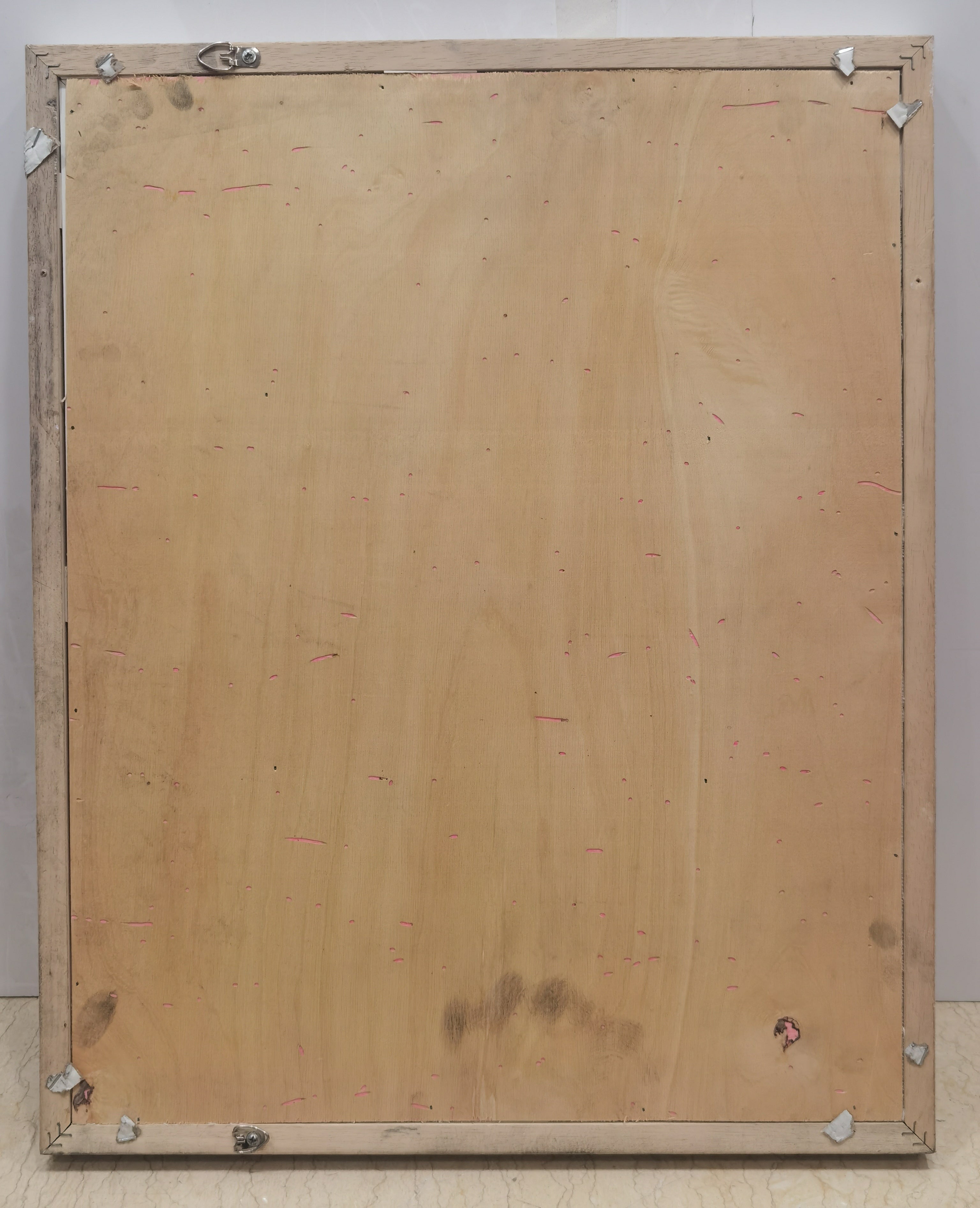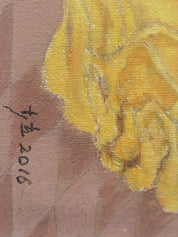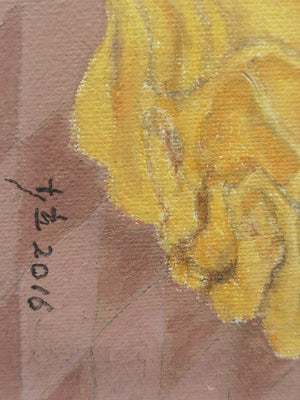Human Skit Part 3
Shaoli Chen
Artwork Details
Artwork Description
Title: Human Skit Part 3
Artist: Shaoli Chen
Date: 2016
Medium: Oil on canvas
Dimensions: 11.8 x 8.3 in (30 x 24 cm)
Artwork Identification:
In Human Skit Part 3, Shaoli Chen presents a reclining nude woman rendered in a delicate, almost diaphanous light. She lies atop richly colored textiles in saffron and mauve, surrounded by botanical elements and a traditional porcelain vase filled with cascading blossoms. The compact format enhances the sense of intimacy, while the composition maintains Chen's hallmark blend of sensuality and symbolic elegance.
Artistic Style and Influences:
This piece draws heavily from Chen’s distinctive synthesis of classical Chinese decorative arts and European figurative painting. The flattened perspective and floral arrangements reference traditional Chinese painting scrolls, while the anatomical precision and soft modeling of the figure evoke Renaissance influences. The visual contrast between vibrant fabric folds and the still repose of the body deepens the painter’s exploration of aesthetic and cultural tension.
Historical Context:
Shaoli Chen, born in Xuzhou City, Jiangsu Province in 1950, is a distinguished professor and master tutor at Nanjing University of the Arts. He graduated with a bachelor's degree in oil painting in 1976 and a master’s degree in Arts in 1989. A respected member of the China Artists Association and executive director of the Jiangsu Oil Painting Society, Chen stands as a pivotal figure in the post-1978 renaissance of Chinese academic oil painting. His work navigates the confluence of China’s visual heritage and the expressive possibilities of Western mediums.
Provenance:
Provenance documentation can be provided upon contact.
Condition and Conservation:
The painting is preserved in very good condition.
Artistic Significance:
Human Skit Part 3 encapsulates Chen’s deft control over figural form, textile depiction, and compositional intimacy. It is a quietly compelling work that reflects the artist’s ongoing dialogue between personal expression and inherited tradition, and makes an ideal addition to collections of contemporary Chinese realist painting or cross-cultural figuration.







